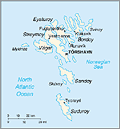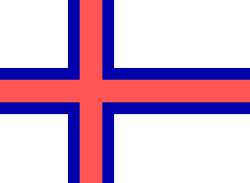Faroe Islands
Facts & Figures

- Status: Autonomous part of DenmarkChief of State: Queen Margrethe II (1972)High Commissioner: Birgit Kleis (2001)Prime Minister: Kaj Leo Johannessen (2008)Total area: 541 sq mi (1,401 sq km)Population (2014 est.): 49,947 (growth rate: 0.49%); birth rate: 13.57/1000; infant mortality rate: 5.71/1000; life expectancy: 80.11Capital and largest city (2011 est.): Tórshavn, 20,000Monetary unit: Faroese kroneLanguages: Faroese, Danish (both official)Ethnicity/race: ScandinavianReligion: Evangelical Lutheran 83.8%, other and unspecified 16.2% (2006 census)Literacy rate: n.a.; note - probably 99%, the same as Denmark properEconomic summary: GDP/PPP (2010 est.): $1.471 billion; $30,500 per capita. Real growth rate: 2.9% (2010 est.). Inflation: 2.3% (2011). Unemployment: 6.8% (2011). Arable land: 2.15%. Agriculture: milk, potatoes, vegetables; sheep; salmon, other fish. Labor force: 34,710 (2010): agriculture 10.7%, industry 18.9%, services 70.3%. Industries: fishing, fish processing, small ship repair and refurbishment, handicrafts. Exports: $824 million (2010): fish and fish products 94%, stamps, ships. Imports: $776 million (2010): goods for household consumption 24%, machinery and transport equipment 23.5%, fuels 21.4%, raw materials and semi-manufactures, salt). Major trading partners: Denmark, Norway, Iceland, Germany, UK, Nigeria, Netherlands, Russia, China (2012).Major sources and definitions

